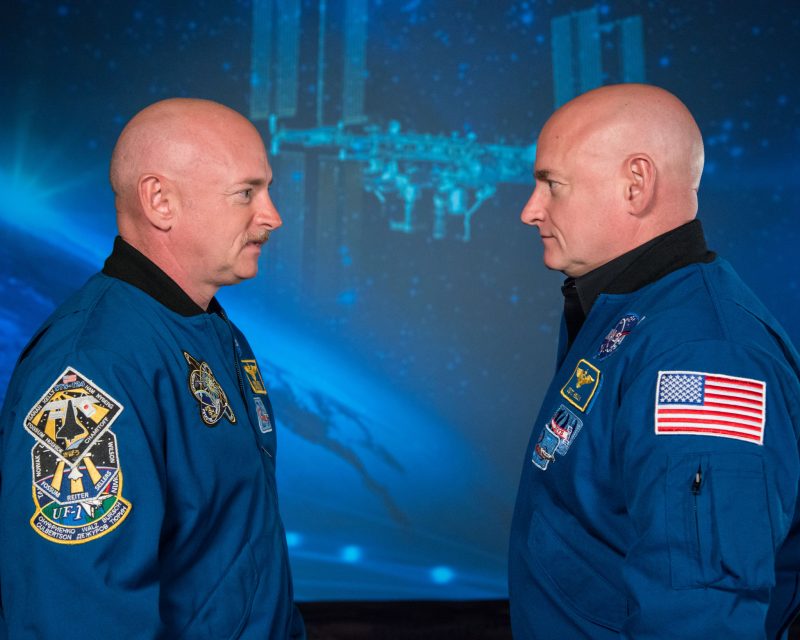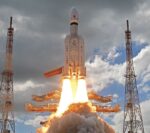NASA’s ‘Twins Study,’ landmark research on US astronauts
Retired astronaut Scott Kelly, who spent a year on the International Space Station, is pictured on the right, opposite his identical twin brother Mark, also a former astronaut (Robert MARKOWITZ)
Washington (AFP) – What if you could send an astronaut into space for a year and monitor him closely along with his identical twin brother on Earth?
The US space agency NASA did just that and published the findings on Thursday of a landmark study that could provide insights into the hazards of long space flights such as a mission to Mars.
The researchers found that most of the changes to the human body from extended spaceflight returned to normal shortly after a return to Earth.
Dr. Susan Bailey of Colorado State University said the study is the “most comprehensive view that we’ve ever had of the response of the human body to space flight.”
The “NASA Twins Study,” published in the journal Science, monitored US astronaut Scott Kelly, who spent a year on the International Space Station, and his earthbound identical twin Mark Kelly, also a former astronaut.
Using Mark as a baseline, the 84 researchers at 12 universities documented the molecular, cognitive and physiological effects of Scott’s year in space.
“There are thousands of gene and molecular changes that occur as someone goes in space,” said Dr Michael Snyder of Stanford University.
“Virtually all of those returned to normal by six months,” Snyder said. “It’s reassuring to know that when you come back things will largely be back to the same.”
Bill Paloski, director of NASA’s Human Research Program, said the study will help understand the challenges of interplanetary missions such as a two- or three-year journey to Mars.
Scott, a 50-year-old veteran of two US Space Shuttle missions, spent 340 consecutive days on the ISS — from March 27, 2015 to March 1, 2016.
He was monitored pre-flight and post-flight and during his time on the ISS. Blood, urine and stool samples were sent back to Earth on resupply vessels.
At the same time, scientists monitored Mark — a veteran himself of four Space Shuttle missions — on Earth as what they called a “genetically matched ground control.”
“The unique thing is that because they’re twins, essentially they have the same genetic code,” said Dr. Andy Feinberg of Johns Hopkins University.
– Weight loss –
Dr. Stuart Lee of NASA’s Johnson Space Center said measurements were taken of the thickness in both Scott and Mark of the carotid artery wall, which can be an indicator of cardiovascular disease or stroke risk.
“Our main findings in Scott were that the carotid artery wall became thicker early in flight and remained so throughout the mission,” Lee said.
Mark did not have any such thickening.
Thickening of the carotid artery wall has been observed in astronauts previously.
So has weight loss due to poorer nutrition in space and a lack of exercise.
Scott lost seven percent of his body mass during his time on the ISS while Mark gained about four percent during the course of the study.
In one test, both Scott and Mark were administered a flu vaccination. It delivered a similar immune response.
The twins also performed a battery of cognitive tests before, during and after the flight and found that Scott’s cognitive performance declined post-flight in terms of speed and accuracy.
Chris Mason, a geneticist at Weill Cornell Medicine, looked at how the unique environment of space impacts genes.
“We catalogued basically what is the landscape of all these genes that have gone up and gone down at different stages during the mission,” Mason said.
“We saw that the vast majority, over 90 percent of all these changes, all returned back to baseline coming back to Earth,” Mason said.
– Telomere length –
Some of the most interesting research was done by Dr. Bailey’s team at Colorado State University which looked at telomeres, the ends of chromosomes that typically shorten as people get older.
Telomeres are considered a biomarker of aging or health risks from cardiovascular disease or cancer.
Bailey’s team evaluated Scott and Mark’s telomere lengths before the flight and found that they were very similar.
What surprised her team was that Scott experienced a “specific elongation of telomeres” during his time on the ISS.
“Scott’s telomeres were longer during space flight than they were either before or after,” Bailey said.
Bailey cautioned that the finding “can’t really be viewed as the fountain of youth and that people might expect to live longer because they’re in space.”
She said there was a “very rapid decrease” in telomere length upon Scott’s return to Earth and he also had some telomere loss.
“Because such metrics can inform overall health, monitoring telomere length dynamics represents an important element of evaluating health and potential long-term risk for future astronauts,” the study said.
Bailey said her team has not come up with an explanation for the telomere lengthening but was looking at whether the higher radiation exposure in space, inflammation or stress may be responsible.
Feinberg noted some of the logistical challenges of the study.
For his own safety, scientists were only allowed to draw “less blood from Scott than a child is allowed to have drawn during a hospital stay,” he said.
On one occasion, supplies for the study being shipped to the ISS were lost when a SpaceX transport rocket blew up.
Disclaimer: Validity of the above story is for 7 Days from original date of publishing. Source: AFP.


